Laying out the text
Columns
Scribes needed guides for their writing, just as we do, to ensure evenness, neatness and also legibility. To make those guides, scribes would employ pricking and ruling. First, the space for the text block would be measured out. In general, the larger the margins are, the more expensive the book was. Some texts are set out in columns; usually two, but sometimes more. The number of lines on a page also varies, depending on the size of the scribe’s hand, or the arrangement of the text.
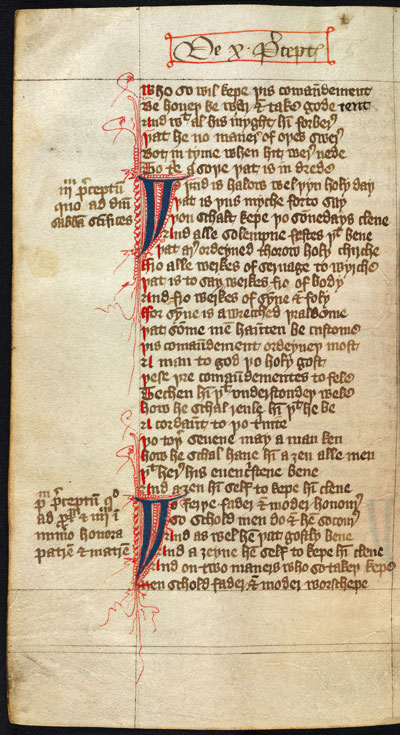
Top: Page laid out as one text block, from ‘Speculum Vitae’, WLC/LM/9, f. 16v
Bottom: Page laid out as two columns, from Robert of Gretham, ‘Mirur’, WLC/LM/3, f. 72r

The page from 'Speculum Vitae' has a wide left-hand margin, in which the scribe has written headings. These mark the division between different pieces of text, and allow the reader to flick through the book to get an overview of its contents.
Many scholastic texts were laid out with wide margins all the way around, to leave space for the reader/s to add their own glosses, notes and commentaries.
Rulings
Until the twelfth century, ruling was done by pressing down using the back of a knife or a stylus (a pointed metal tool). Later, it became more common to rule by drawing a line with lead or graphite. Scribes tried to find ways of making it easier and quicker to do. One of the most obvious and common ways is by pricking. The scribe would use a sharp implement – the point of knife, for instance – to mark out the ends of the lines, throughout the gathering. Later, pricking wheels were developed. We can sometimes see pricking on manuscripts, although often it was cropped off during binding.
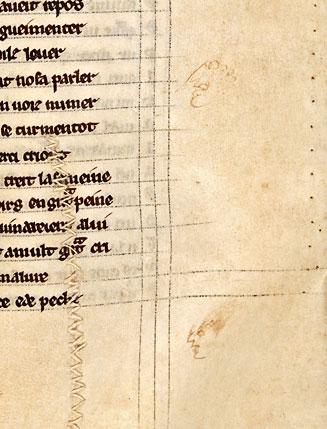
Detail showing clear lines and prickings, from Robert of Gretham, ‘Mirur’, WLC/LM/3, f. 72r.
Note also that the parchment has torn and been repaired by sewing
Scribes
It was not uncommon for several individuals to work together on copying a manuscript, dividing the work amongst themselves. Sometimes scribes copied individual quires or groups of quires simultaneously, especially if all the exemplars for copying were available at once. Sometimes they had to wait for a colleague to finish with an exemplar before they could begin their own contribution. The portion of a text copied by one scribe is known by academics as a ‘scribal stint’ and one scribe could add several ‘stints’ to a manuscript depending on how the division of labour was organised and the availability of the exemplar.
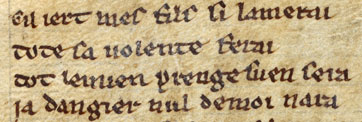
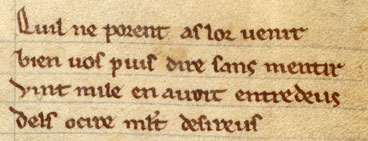
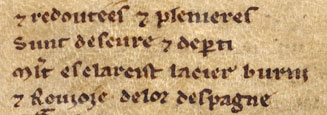
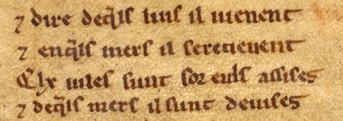
Details of different scribes’ handwriting, from a volume of French romances and fabliaux
WLC/LM/6, ff. 20v, 38v, 109r and 121r
Next page: Decoration and illumination